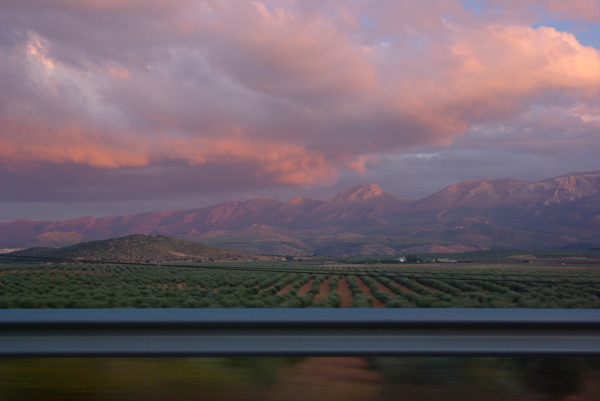Day #5 was supposed to be a rest day in Granada, but given the geography of the Alhambra and other attractions, we ended up walking constantly and uphill to boot. So when we returned to the cortijo in La Alpujarra, we decided to do a shortish hike on the following day #6 and then spend our last day #7 on a longish hike on what our guidebook called “The best Alpujarran path.”
Day #6: 4 Miles from Bubion to Capileira
We drove 45 minutes to Bubion, a rustic white-walled village that clings to the side of the Poqueira Valley. The trail descends the valley to the river and then ascends to Capileira, another picturesque village that capitalizes on its quaintness and does a brisk tourist trade selling goods like wool blankets and pottery. In this picture, Bubion is the cluster of white buildings on the left. The village on the right is Pampaneira. Both have populations under 200. This picture was taken from an era, which is a paved threshing platform that belonged to the cortijo near the bottom of the picture:
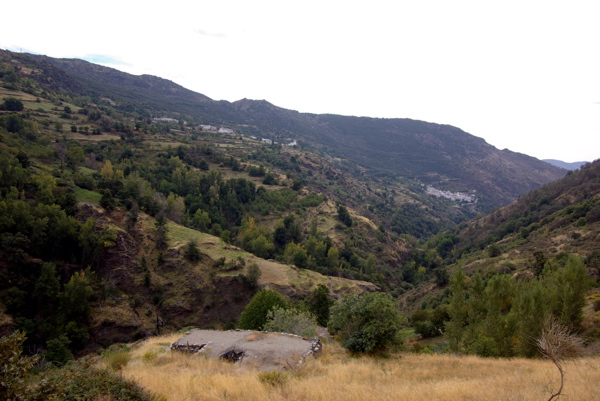
We passed several abandoned cortijos. This one appeared to still be in use, although it is probably not the farmer’s primary residence:
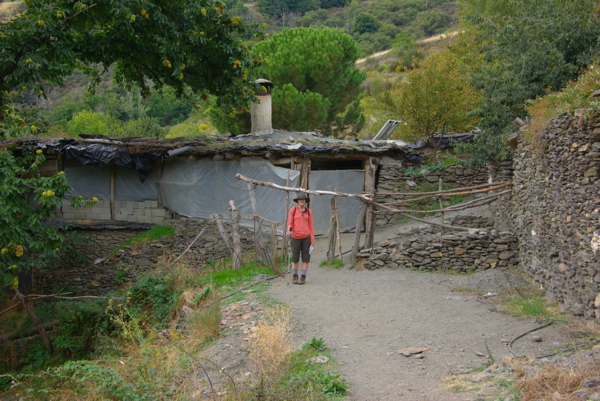
Crossing the river at the bottom of the valley:
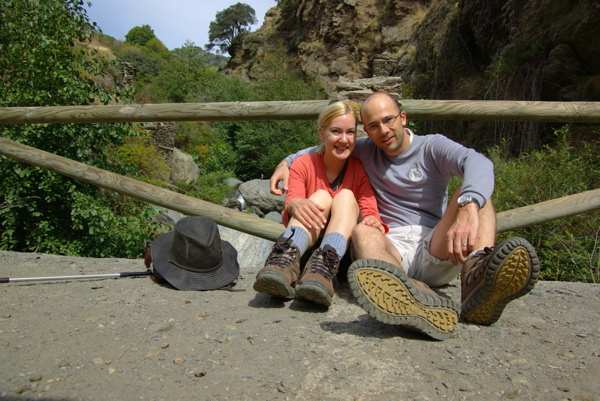
I spied this spider and totally spazzed out, more from amazement than fear. It’s as big as it looks:
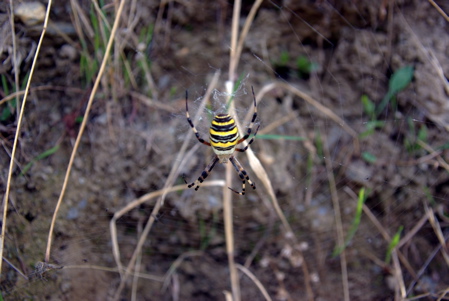
When we reached Capileira, one of the first things we saw was this terrific blue door:
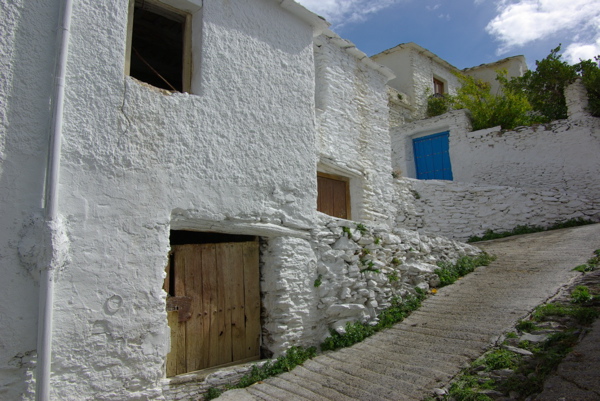
We scoured the village looking for a bakery that our guidebook raved about, but when we finally found the street, the bakery was not there.
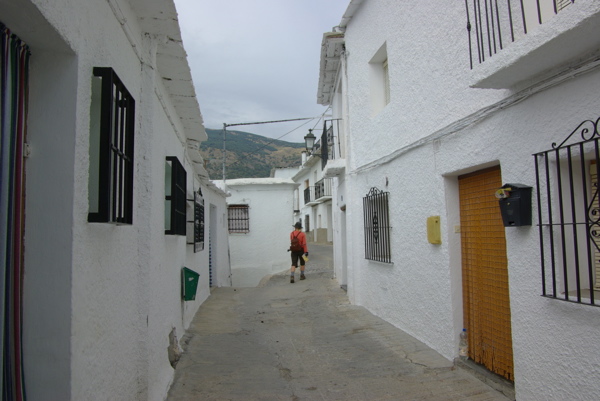
I liked the chimneys. The scale of the buildings, doors, and streets sort of reminded me of Munchkinland. “Mr. Pinault, I have a feeling we’re not in America anymore.”
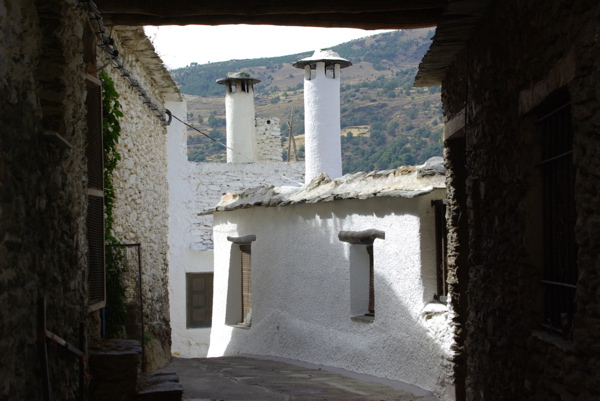
Day #7: 7 Miles in the La Taha Valley
La Taha is a grouping of 7 small white villages that were established by the Moors, although there are also structures that date back to Roman times. We started out in the village Mecina, descended the valley to the Rio Trevelez, crossed to the other side of the valley, ascended to where we could get a view of La Taha, then descended back to the river, and then ascended back to Mecina. The path — constructed hundreds of years ago to support agriculture and industry along the river — was billed as “the best Alpujarran path” because of the kind grading, ample width, and rewarding views. Here is the ancient Roman bridge that crosses the river:
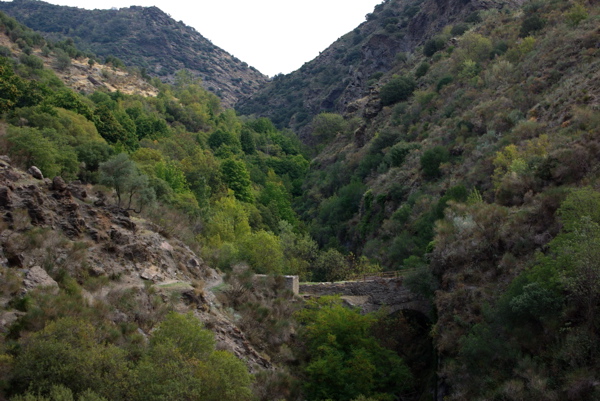
I believe 5, maybe 6 of the La Taha villages are visible in this photo, taken from the other side of the valley:
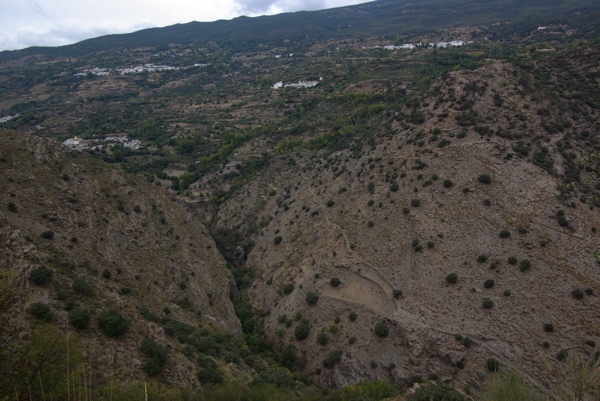
When we were ascending back to Mecina, we encountered another enormous herd of sheep and goats, feeding ravenously on the trees and grass. Here is the herder:
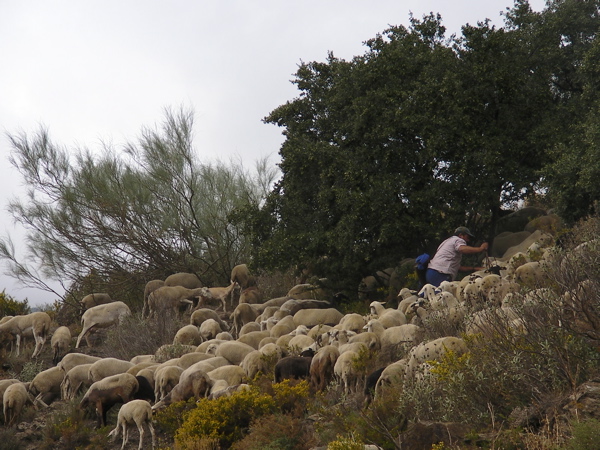
Mr. Pinault stalked the goats with his camera as they fed on leaves from the olive trees:
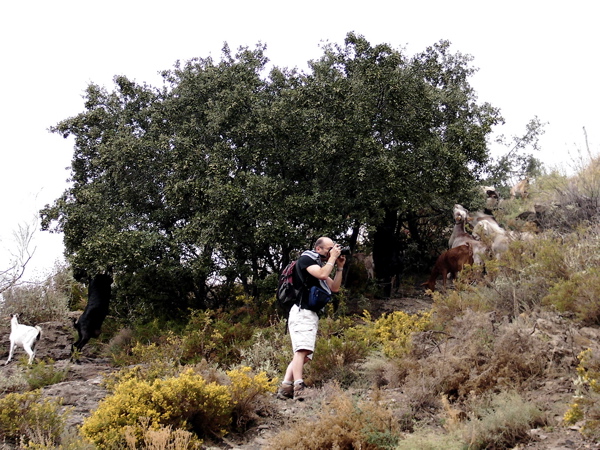
This guy is our favorite: 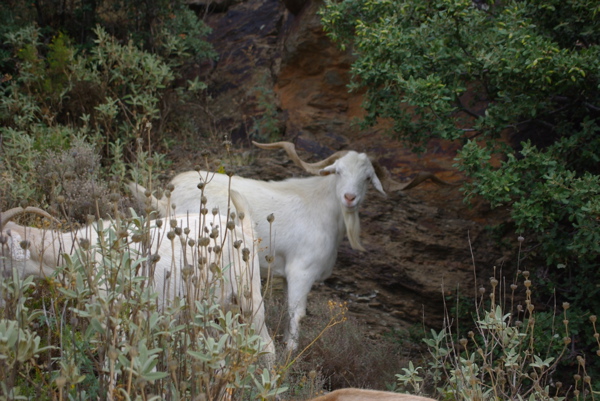
After we got our fill of photos, we continued on the trail. Only… some sheep started to follow us. And I guess the other sheep started following them. Soon the whole herd was after us, gaining in speed (I have a great video somewhere), and we panicked and stepped aside to let them pass:
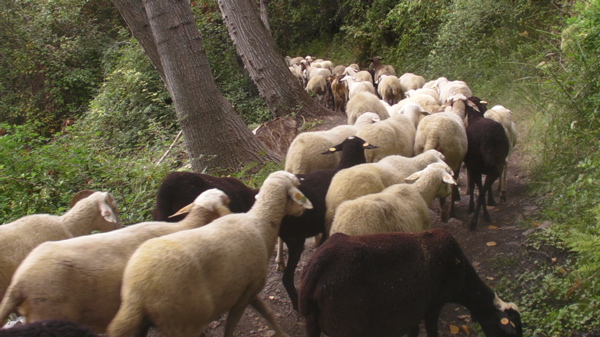
Very soon the herder came racing down the path to catch up with his herd. I felt badly that the sheep had followed us in the wrong direction and worried we had ruined this guy’s livelihood, but one minute later, the herd came charging back!
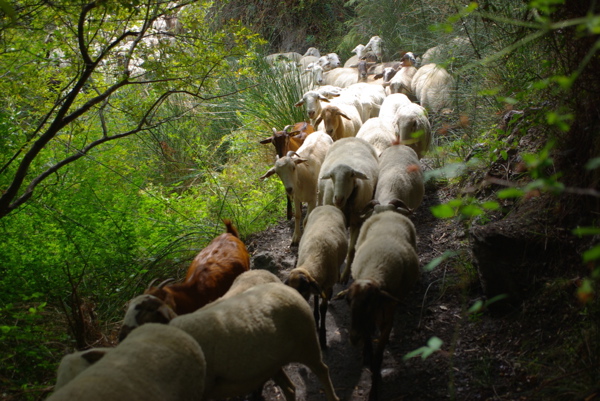
We continued to Mecina, stopping at this public fountain that has dispensed healthful iron-rich mineral water for hundreds of years. I couldn’t resist drinking the water.
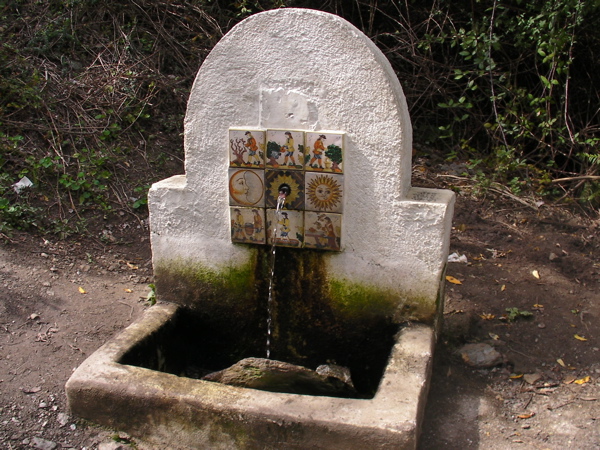
So ‘the running of the sheep’ pretty much brought the Honeymoon to a rousing close. We went back to the cortijo, showered, packed, and checked out of the cortijo. Before we left, we took one last Honeymoon picture at the cortijo:
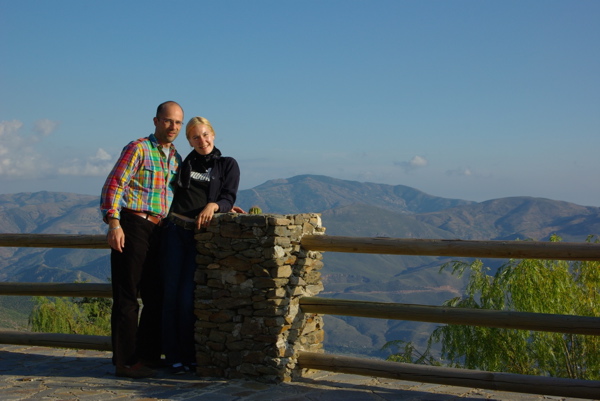
And then hit the highway towards Madrid for our flight to France the next day. Here is a picture of the mountains and the olive groves taken from the car as we sped out of Andalucia:
